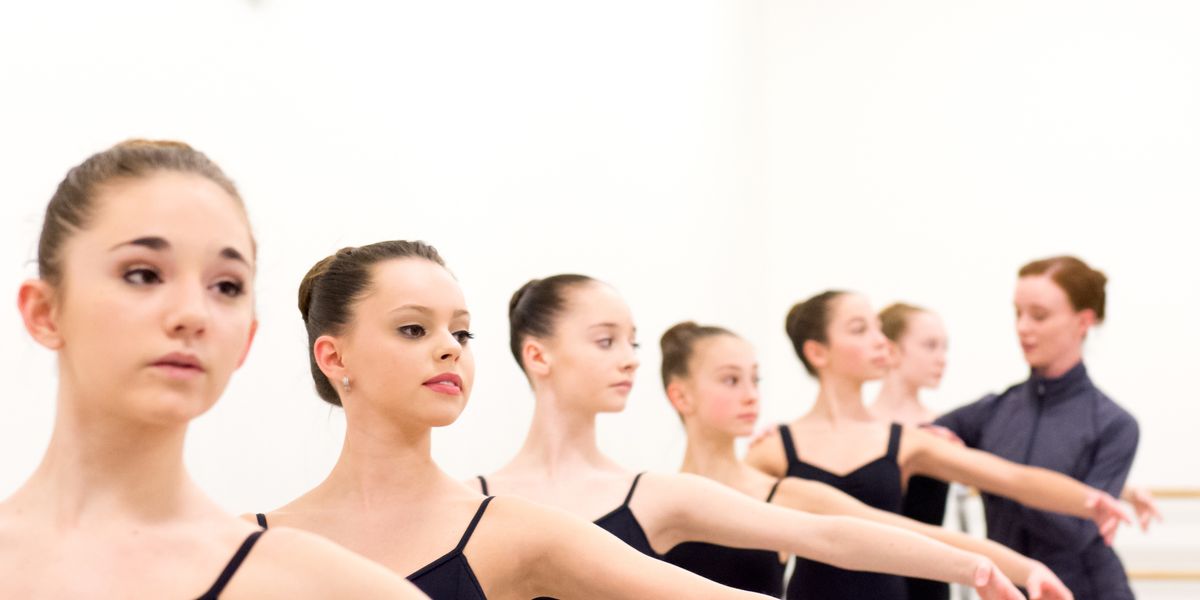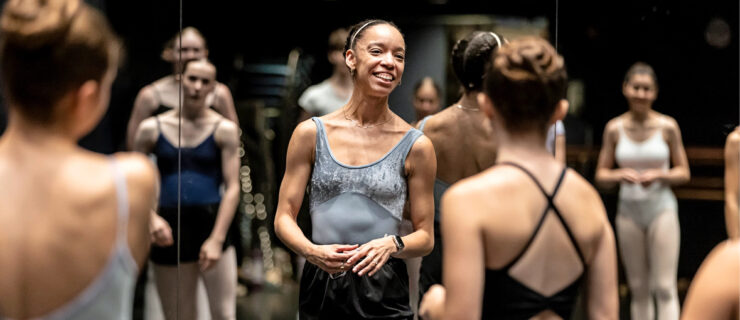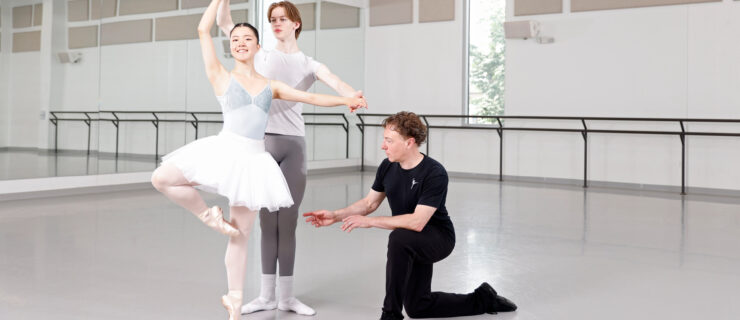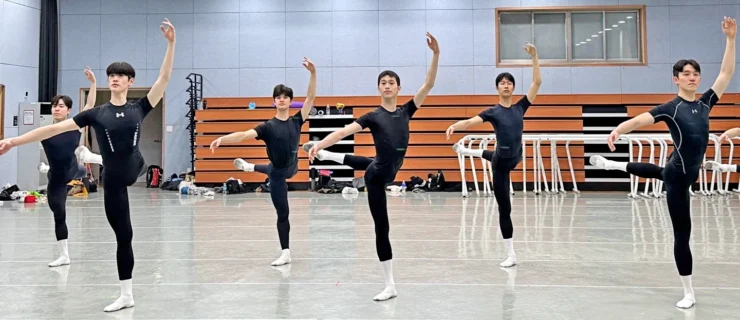Thinking About Full-Time Training Programs? 6 Key Discussions to Have First
If you think a full-time pre-professional program might be right for you, it’s never too early to start talking about the big transition. Deciding to forgo a “normal” high school experience for the chance to take your training to the next level is life-changing, and it’s vital to have in-depth discussions with your family. Here’s a checklist of topics to bring up—before the auditions begin.
1. What are my professional goals?
At the very least, you should feel sure that you want a professional dance career. But beyond tutus and dreams, it’s important to understand what this means on a day-to-day level: the daily grind of technique classes and physical therapy, all-consuming workdays, and the endless pursuit of artistry and perfection. “I find a lot of students haven’t done enough research on what a professional life is about—what it really means,” says Denise Bolstad, managing director of Pacific Northwest Ballet School.
In addition, think about what kind of company you want to join and which schools can facilitate that. What’s your favorite repertoire? Are you interested in a large company or a smaller one? For instance, Miami City Ballet corps member Ellen Grocki knew she loved Balanchine, so she researched schools where she’d gain extensive training in the style. She eventually left her home in Maryland at 16 to study at MCB School.
 Summer intensive students at Pacific Northwest Ballet School. Photo by Angela Sterling, Courtesy PNB.
Summer intensive students at Pacific Northwest Ballet School. Photo by Angela Sterling, Courtesy PNB.
But if you’re not sure exactly where and what you want to dance yet, it’s not the end of the world. “When our students come in at 14, they have dreams of being the next Makarova,” says Michael Owen, director of dance at Walnut Hill School for the Arts, a boarding arts high school in Natick, Massachusetts. “Then, in the years they’re here, a lot changes for them—their eyes open up to other styles of movement.”
Valerie Madonia, academy director at Colorado Ballet Academy, agrees: “As you grow and mature, your options will become more apparent, as far as which companies suit you, or whether in the end you decide to go to a college dance program.”
2. How do we evaluate a school’s quality of training?
A school’s prestigious reputation doesn’t always mean it will be best for you. Your top priority when researching pre-professional programs, says Bolstad, should be finding the best quality of training that your family can manage, location and budget-wise. Look at schools’ curriculums (usually available on the website), and ask peers and teachers for recommendations. Attend summer intensives, if possible—and the sooner, the better. “Your investment in a school needs to start earlier than 17 or 18,” says Bolstad. “Audition for at least one summer course, so you have a sense of what an organization is like.” An intensive can be a good “trial run” to find what feels right. If going to one isn’t possible, consider visiting for a few days during the academic year.
Additionally, ask the school about its track record of placing students in companies and college dance programs—and, specifically, which ones. “Do they only feed into their company, or do they feed into others around the world?” says Madonia. “Do the students come out versatile and ready to apply to many different programs?” It’s a strong testament to the quality of the program—and the hire-ability of its graduates—if its dancers succeed in a variety of settings.
 Valerie Madonia teaching pre-professional students at the Colorado Ballet Academy. Photo by Francesco Estevez, Courtesy Colorado Ballet.
Valerie Madonia teaching pre-professional students at the Colorado Ballet Academy. Photo by Francesco Estevez, Courtesy Colorado Ballet.
3. Should I wait until after high school to train full-time?
This question depends on the quality of your current training. “It’s very individual,” says Bolstad. In many cases, dancers “have a slight advantage if they’ve left sooner, before graduating high school.”
But if you have solid training at your home studio and choose the normal high school route, it’s not too late. Most trainee programs and second companies accept recent high school graduates. “Times have changed in the last 20 years,” says Madonia. “We’re also seeing more wonderful college programs, and seeing students going from college into second companies, into companies.” Owen agrees: “Now, it’s not unheard of for dancers who are 21, 22 or 23 to get into companies for the first time.”
 Photo courtesy Walnut Hill School for the Arts
Photo courtesy Walnut Hill School for the Arts
4. If not, what do I do about my education?
Most dancers who train full-time during high school either continue their education online or through flexible classroom options. At MCB School, Grocki took classes at a high school across the street from the studio each morning before heading into her 10 am technique class. At performing arts high schools like Walnut Hill, academics are built into the daily schedule.
Online programs require a certain personality type for a student to be successful. You’ll need to be driven, organized, time-efficient and okay working alone on a computer for hours each day. “I’ve seen some students excel without a problem and others who struggle with time management,” says Madonia.
5. What are the housing options?
There are three basic housing setups in most boarding programs: dormitories, host families or, for the most independent dancers, unsupervised apartments. One of the reasons Grocki chose MCB School was that there were dorms across the street from the studio. She lived there her first year; by her second, her mom felt comfortable letting her move into an unsupervised apartment with fellow dancers.
For those who want more of a family experience, or if dorms aren’t available, many programs will house you with a host family who already has a connection to the school and can provide meals, transportation and emotional support. Keep in mind that some schools, like PNB, do not offer supervised housing, in which case dancers rent apartments (usually with roommates).
 Photo courtesy Walnut Hill School for the Arts.
Photo courtesy Walnut Hill School for the Arts.
6. How will we pay for this?
Ballet tuition, let alone housing and living expenses, is costly, and it’s important for dancers to understand how heavily this factor may weigh on their parents. Merit-based scholarships are the most coveted form of financial aid, but also the hardest to come by. For Grocki, a half merit scholarship was a huge factor in making her dream possible. Need-based financial aid is usually more readily available, but be aware that the application deadlines may fall early in the summer, before you receive the invitation to study. Independent scholarships and grants through organizations like the National YoungArts Foundation can help pay tuition costs.
Some schools may offer work-study opportunities, while other times, dancers find outside work to help offset living expenses. At Colorado Ballet Academy, students often pick up babysitting jobs for parents of other students or even their dance teachers.
If your family can make it work, the investment in your training is well worth it. “This is a once-in-a-lifetime opportunity to be accepted and study in a major national school,” says Bolstad. “I don’t think anyone ever regrets it.”





